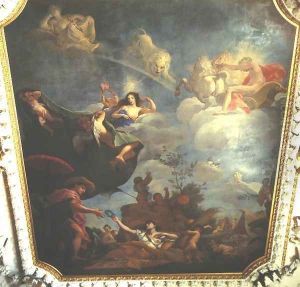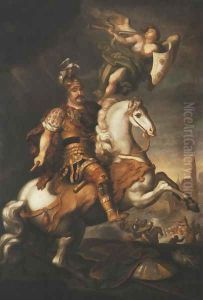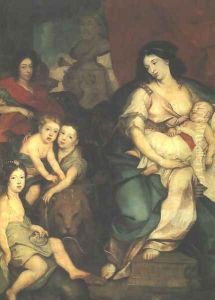Jerzy Eleuter Szymonowicz-Siemiginowski Paintings
Jerzy Eleuter Szymonowicz-Siemiginowski was a prominent Polish painter, known for his Baroque style and significant contributions to Central European art during the late 17th and early 18th centuries. Born in 1660 in Lviv, which at the time was part of the Polish-Lithuanian Commonwealth and is now in Ukraine, Siemiginowski-Eleuter came from a family with Armenian heritage. His father was a painter as well, which likely influenced his early interest and eventual career path in the arts.
Educated in Lviv, Siemiginowski-Eleuter later traveled to Rome to study, which was a common practice among aspiring artists of his time. His studies in Italy had a profound impact on his artistic style, as he absorbed the principles of Baroque art, characterized by dramatic expression, rich colors, and bold contrasts of light and shadow. Upon his return to Poland, he became court painter to King Jan III Sobieski, a role that significantly shaped his career and artistic output.
Siemiginowski-Eleuter's role as a court painter to the Polish king led to a variety of commissions, many of which were of a grand scale suitable to the tastes of European monarchies during the Baroque period. He is perhaps best known for his decorative frescoes and portraits. His frescoes can be found in places such as the Wilanów Palace, the royal residence of King Jan III Sobieski, located near Warsaw. These works are celebrated for their intricate details and the way they incorporate the architectural elements of the spaces they adorn.
The artist's portraits of the Polish nobility also garnered acclaim for their elegance and the skillful depiction of his subjects. Siemiginowski-Eleuter's ability to capture the character and prestige of the Polish elite further solidified his reputation as one of the leading painters of his time in Poland.
Siemiginowski-Eleuter's career also included his involvement in the decoration of other notable buildings, such as churches and palaces, which were often collaborative efforts with other artists and architects. His work reflects the opulence and dynamism of the Baroque movement and provides a glimpse into the cultural life of the Polish-Lithuanian Commonwealth.
Jerzy Eleuter Szymonowicz-Siemiginowski passed away in 1711. His legacy is preserved through his contributions to the development of Baroque art in Poland, and his works continue to be studied and admired for their artistic significance and historical value.


